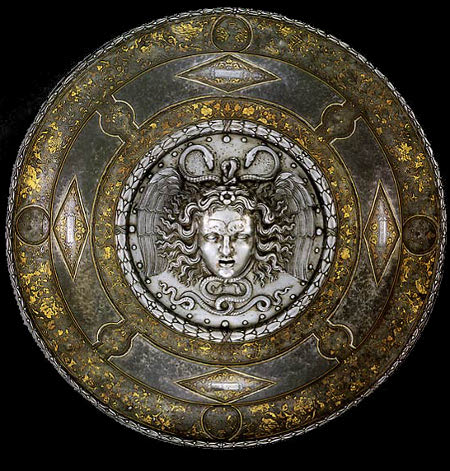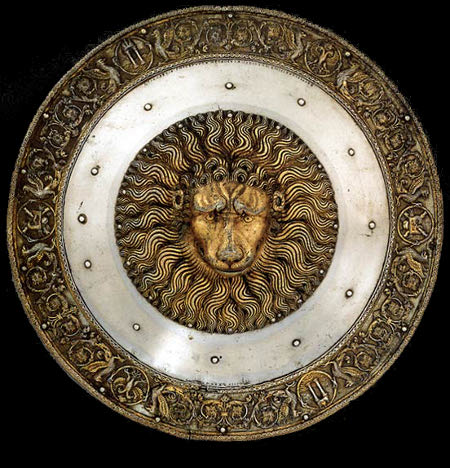Two Shields by Filippo Negroli


Medusa Shield of Charles V, steel, silver and gold, 1541
Shield of Charles V, steel and gold, 1533
Real Armería, Patrimonio Nacional, Madrid
For the last century scholars have universally acknowledged Filippo Negroli’s superiority in the art of embossing and have held up his harnesses, helmets, and shields as the exemplars against which all other relief-decorated armor must be judged. Indeed, Filippo’s classically inspired works epitomize what is generally considered “Renaissance” armor, and they rank among the most valued possessions of any museum.
Filippo appears to have been the first Italian armorer to have fashioned these pseudo-antique works, especially helmets, from single plates rather than to construct them by means of appliques, as was common in Italian parade armor of the fifteenth century, and in this art, both in design and technique, he was unrivaled. Relief decoration on armor was appreciated by the Renaissance antiquarians as the true classical mode of armor embellishment. All of Filippo’s signed works are executed in relief, but none ever slavishly copies an ancient model. On the contrary, it is the originality of his designs, which freely adapt classical helmet forms and ornament to sixteenth-century norms, together with his technical virtuosity that distinguish Filippo’s works from those of his contemporaries. His armors belong to a humanist culture and were intended for Renaissance princes who were often educated in the classics and saw themselves as successors to the great statesmen and generals of ancient Rome and as the embodiment of the virtues of the ancient heroes. For the kings and captains of the day, wearing Roman-style military equipment imparted a sense of dignity, power, and legitimacy. Filippo’s clients ranked among the most exalted and powerful men in Europe, including Emperor Charles V and Francis I and Henry II of France, and yet the armorer’s signature, inscribed in Latin and placed in a prominent location, reflects an extraordinary pride and self-assurance without parallel in his profession.
Leave a comment